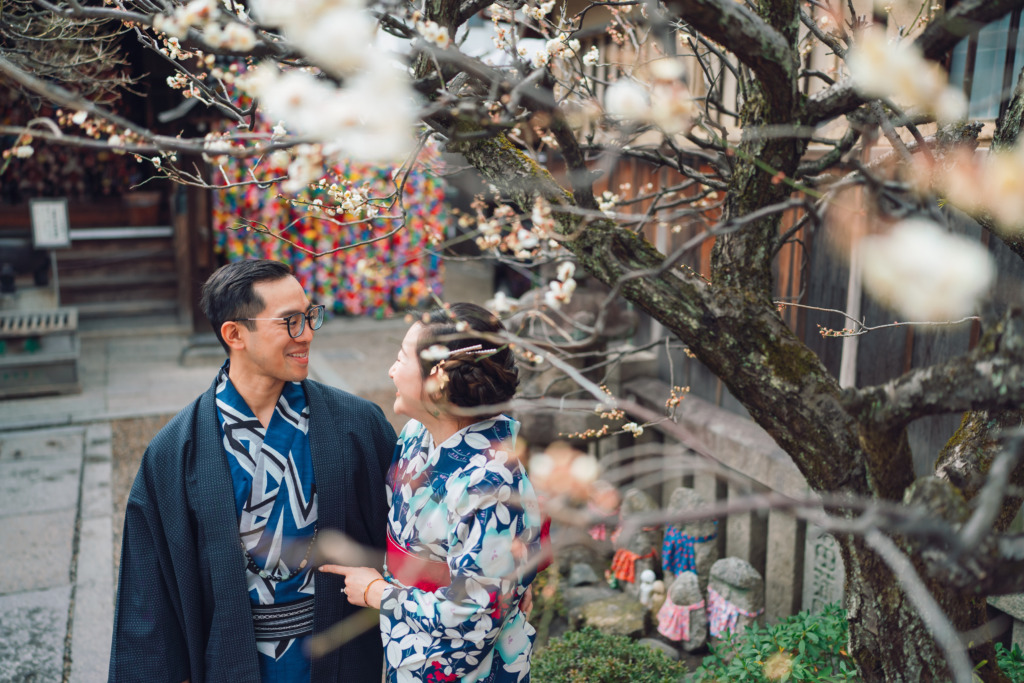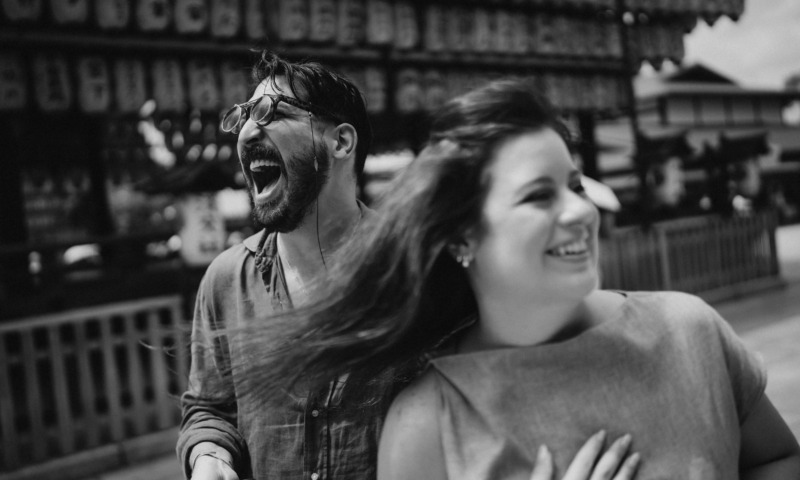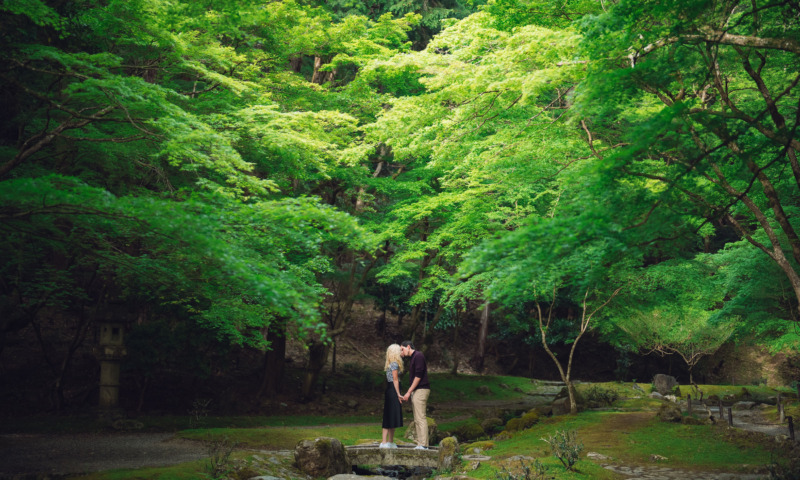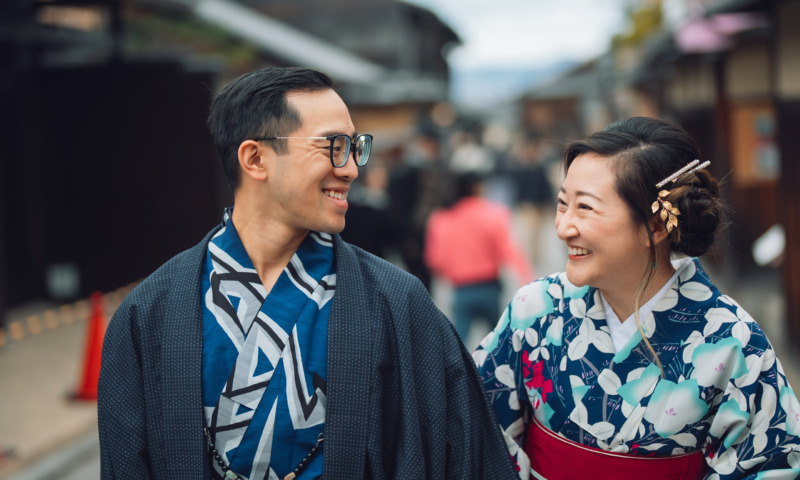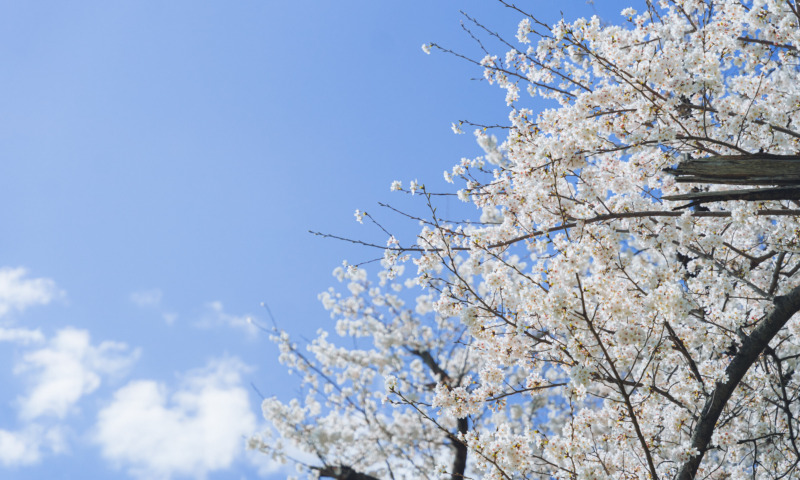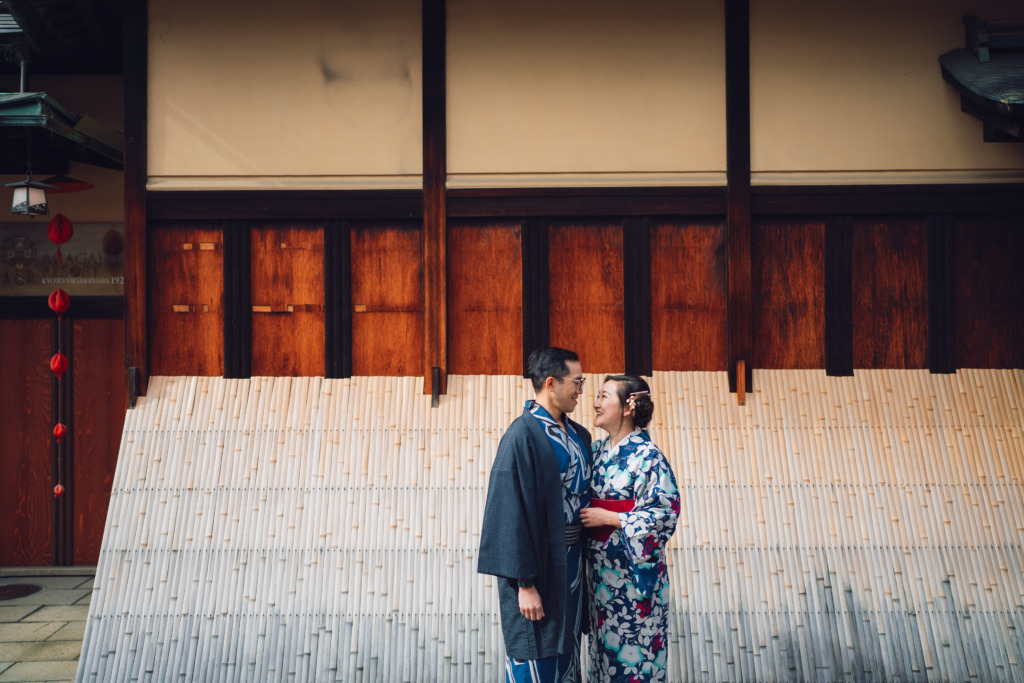
Many of our customers cannot even think of booking a photoshoot in Kyoto without wearing the Japanese traditional garment: the kimono. It seems to have become a set already: “kyoto photoshoot + kimono”. And it’s natural to think like that: in the end, one of the main reasons for coming to Kyoto is to experience tradition as much as possible, which also includes engaging in activities related to traditional crafts and practices like tea ceremony or kintsugi. However, it’s easy to get lost in the process of looking for the perfect kimono if it’s your first time here: both the complex variety of styles and the wide offer of kimono rental stores in Kyoto don’t make it easy for beginners.
A BRIEF GUIDE TO KIMONO RENTAL
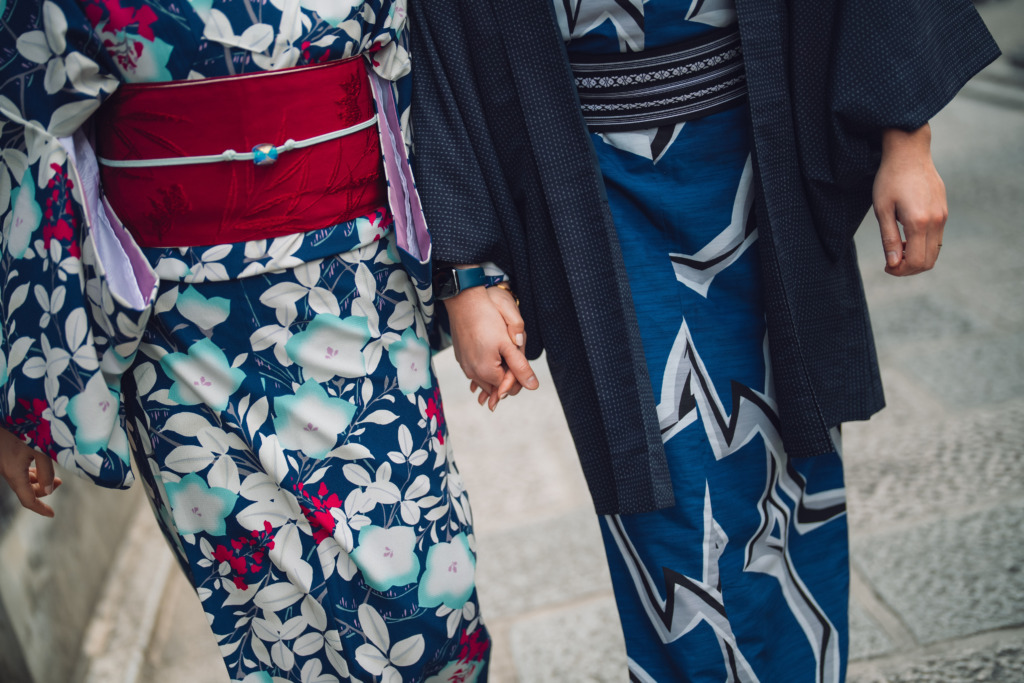
1. Differences between kimonos
The kimono is the quintessential traditional garment of Japan. It has been worn for centuries and, as time went by, it evolved and diverged in new forms and patterns. As one would expect, nowadays Japanese people are more prone to wear western clothing, but that doesn’t mean the kimono days are over. Most Japanese people have some kimonos for special occasions, like a summer festival, a graduation ceremony or a wedding. Besides, there are still people who use it on a daily basis and prefer it over a dull shirt-trousers combination.
Japanese people can easily differentiate between a low quality and a high quality kimono. And this costume presents lots of variants depending on the social occasion it will be used for: from the colourful and luxurious uchikake and shiromuku for traditional Japanese weddings, to casual kimonos for daily use and yukatas for summer festivals.
To the novice eye, distinguishing a high-quality kimono from a normal one can be challenging. It’s easy to fall into tourist traps and end up wrapped up in a piece of cloth of flashy colours and patterns, far from what most Japanese people would consider to fall within the limits of elegance, if not of decency.
That’s why it’s essential to know beforehand some basics on the types of kimono that exist. Let’s start with the kimonos for women:
- Furisode: a kimono with very long sleeves and gorgeous colours and patterns./li>
- Tomesode: a kimono with shorter flaps in the sleeves compared to the furisode. Usually the design tends to use plainer colours.
- Komon: a kimono dyed with simple repeating patterns.
In comparison, the offer for men isn’t as wide or colourful:
- Kosode: kimono of short levees and plain colours./li>
- Hakama + haori: a haori is a form of overcoat worn over a kimono. A hakama is a trousers-like garment worn over a kimono. Usually, men wear this combination with a kimono at their wedding ceremonies.
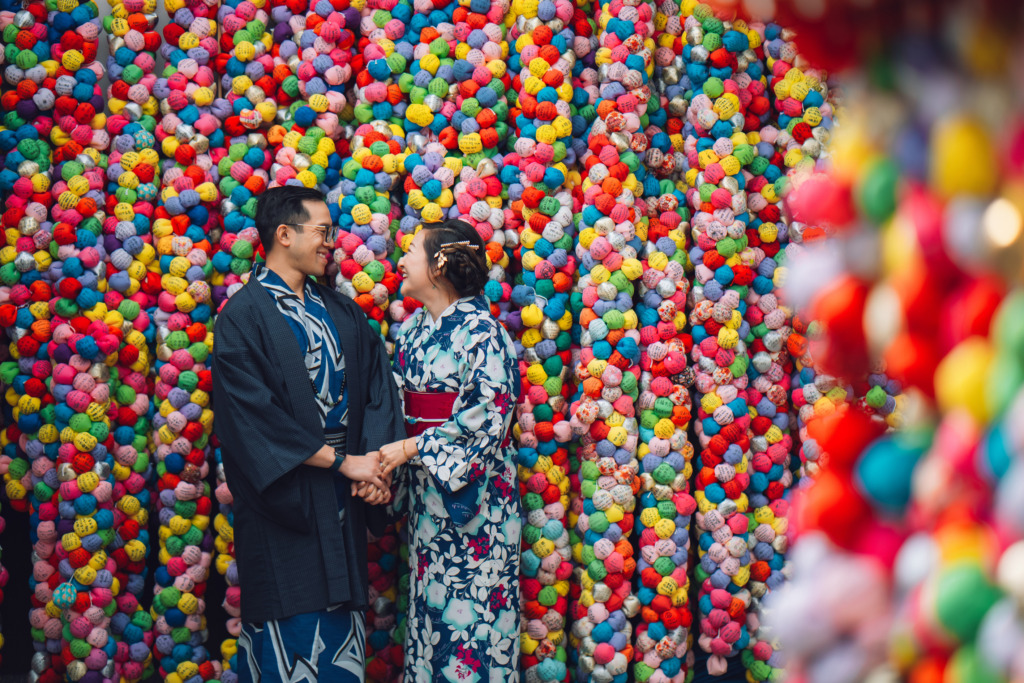
And last, but not least, we have the famous yukata. A yukata is a thin summer version of the kimono, used mainly in casual spaces like bathhouses and festivals. Both men and women wear it, but the colours and patterns according to gender.
If you are up to a pre wedding photoshoot or a full wedding photoshoot you might want to consider a shiromuku (women) or the hakama – haori combination for men.
When renting a kimono in Kyoto most women opt for a komon while men prefere choice the kosode. Precisely because these are the most frequently chosen alternatives, they are the ones where it is easiest to fail. Most rental stores aimed at foreign tourists display cheap, tasteless kimonos that Japanese people usually avoid.
That’s why it’s always important to consult with your photographer or videographer. Be sure to book your session with a photographer that has a deep knowledge of the city and its surroundings. Only a native (or native-like) professional will be able to recommend you the best kimono rental stores based on your ideal. Which leads us to the next section…
2. Kyoto’s best kimono rental stores
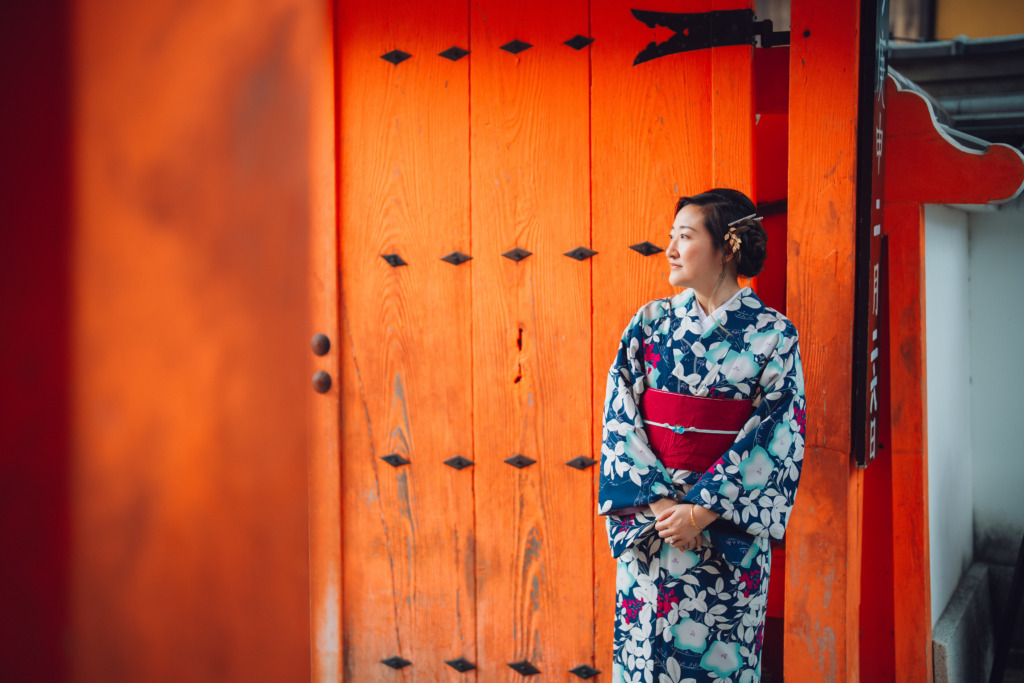
Tayu-tafu
Tayu-tafu is a kimono rental store located near the Kyoto Station that bets for a more relaxed, slow approach to this industry. They guarantee their customers a private space open by appointment only.A member of staff will guide you through the process of selecting the best kimono for you without any other customers in the room. They offer a wide variety of casual garments, most of them are made of Okamoto denim, a world famous high quality fabric.
Their rental prices usually revolve around 10 000 yen/ person (hair arrangement included).
Click here to check Tayu Tafu’s website.
Okamoto
Established 180 years ago, Kyoto’s first kimono rental store now has seven different shops in the city and receives 200 000 visitors every year. Although it isn’t as high-end customer oriented as Tayu-Tafu, Okamoto’s strong point is their location: with stores near the Kiyomizu-dera and the Yasaka Shrine, their customers can go for a stroll in the historic alleys of Kyoto as soon as they change their clothes.
The patterns and colours of the kimonos displayed in Okamoto fit more the image of a standard rental kimono, with flower motifs for women and plain shades for men.
Check here the rental options of Okamoto.
LST Wedding
If you are planning to get married in a Japanese style or just want to have a luxury couple photoshoot, LST wedding should be your choice. Considered one of the best (if not the best) high-end and ceremonial kimono rental stores of Kyoto, the kimonos of LST are embroidered with exquisite materials and patterns. The customer support is also unbeatable: you’ll feel comfortable at every moment and receive expert guidance on which kimono suits you best. Of course, the luxury aspect is also reflected in the price, which can easily amount to quantities over 100,000 yen (worth every penny).
The speciality of LST are ceremonial kimonos like the shiramuku or the hakama-haori combination.
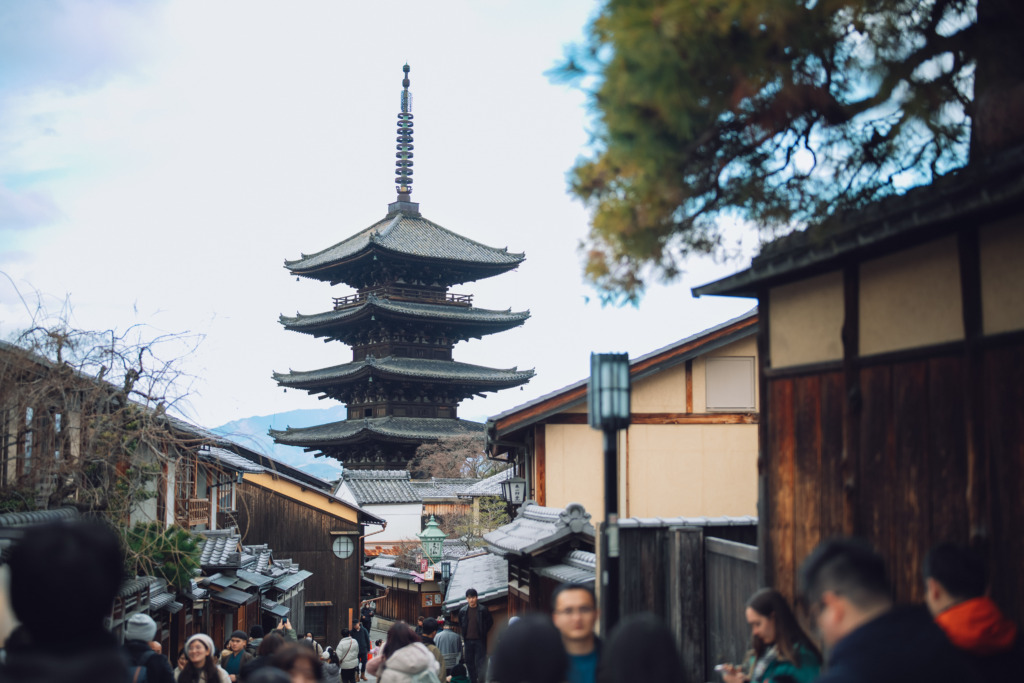
3. Parts of the kimono included in a rental set
Many of you, as it’s natural, might not know what to expect specifically when renting a kimono. The list of items you’ll receive may vary depending on the rental store and the plan you have chosen, but we could say there’s a predetermined selection of items that serve as basis: a kimono (of course), sandals (also known as zori), the traditional socks or tabi and a bag that matches the colour and patterns of your kimono.
Additionally, you might find plans that include hair arrangement, in winter a haori (for the men) and a shawl (for the women), make-up, etc.
4. Kimono rental prices
Generally, a more or less cheap option will range between 3000 and 4000 yen. If you decide to go for a more luxurious experience (either because they offer a private space or because the quality of the fabric is higher), prices will probably go up to 10,000 yen/person. And if you decide to go to the next level and decide to rent a ceremonial or wedding kimono, expect a price tag in excess of 100,000 yen.
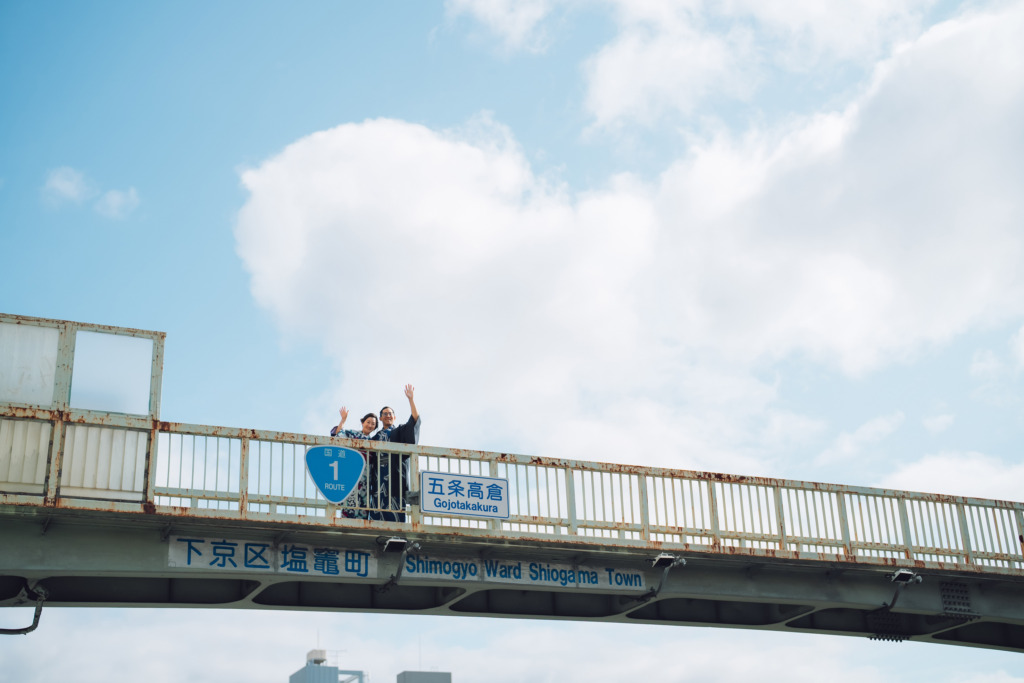
THINGS TO KEEP IN MIND IN A KYOTO KIMONO PHOTOSHOOT
Be creative when choosing the photoshoot location
Not only Higashiyama and Arashiyama are suitable landscapes for a kimono photoshoot. The contrast between the traditional aspect of a kimono and a more urban background can create amazing effects.
Don’t let your clothes determine your mood
Wearing a kimono doesn’t mean the photoshoot should be ceremonious and uptight. It should reflect your feelings during your journey in Kyoto. Let your personality shine through the kimono!
Leave it in the hands of a professional Kyoto photographer!
Booking the services of a couple photographer based in Kyoto has many advantages: they will know the area better and therefore be able to suggest various locations, they can recommend you the best kimono rental store according to your desired photoshoot and the chosen location, they will give you advice on how to pose, etc. In Kyoto, kimono photoshoots are taking place constantly and most of them are carried out by unskilled hands: the employees of a rental store, amateur photographers, etc. If you are looking for a professional photographer to capture your special moments in Japan, don’t hesitate to contact us. We will arrange with you the photoshoot of your dreams.
